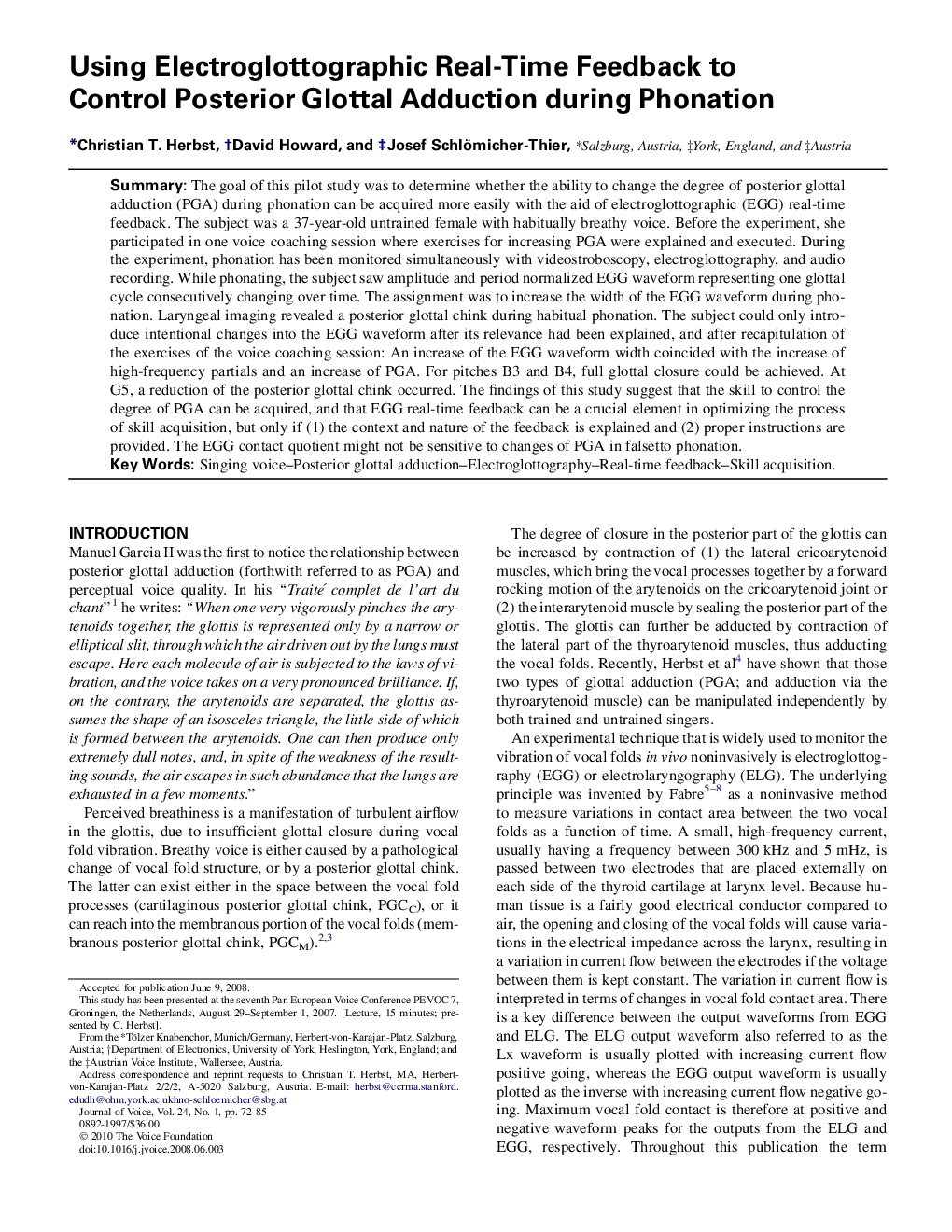| Article ID | Journal | Published Year | Pages | File Type |
|---|---|---|---|---|
| 1102054 | Journal of Voice | 2010 | 14 Pages |
Abstract
The goal of this pilot study was to determine whether the ability to change the degree of posterior glottal adduction (PGA) during phonation can be acquired more easily with the aid of electroglottographic (EGG) real-time feedback. The subject was a 37-year-old untrained female with habitually breathy voice. Before the experiment, she participated in one voice coaching session where exercises for increasing PGA were explained and executed. During the experiment, phonation has been monitored simultaneously with videostroboscopy, electroglottography, and audio recording. While phonating, the subject saw amplitude and period normalized EGG waveform representing one glottal cycle consecutively changing over time. The assignment was to increase the width of the EGG waveform during phonation. Laryngeal imaging revealed a posterior glottal chink during habitual phonation. The subject could only introduce intentional changes into the EGG waveform after its relevance had been explained, and after recapitulation of the exercises of the voice coaching session: An increase of the EGG waveform width coincided with the increase of high-frequency partials and an increase of PGA. For pitches B3 and B4, full glottal closure could be achieved. At G5, a reduction of the posterior glottal chink occurred. The findings of this study suggest that the skill to control the degree of PGA can be acquired, and that EGG real-time feedback can be a crucial element in optimizing the process of skill acquisition, but only if (1) the context and nature of the feedback is explained and (2) proper instructions are provided. The EGG contact quotient might not be sensitive to changes of PGA in falsetto phonation.
Related Topics
Health Sciences
Medicine and Dentistry
Otorhinolaryngology and Facial Plastic Surgery
Authors
Christian T. Herbst, David Howard, Josef Schlömicher-Thier,
